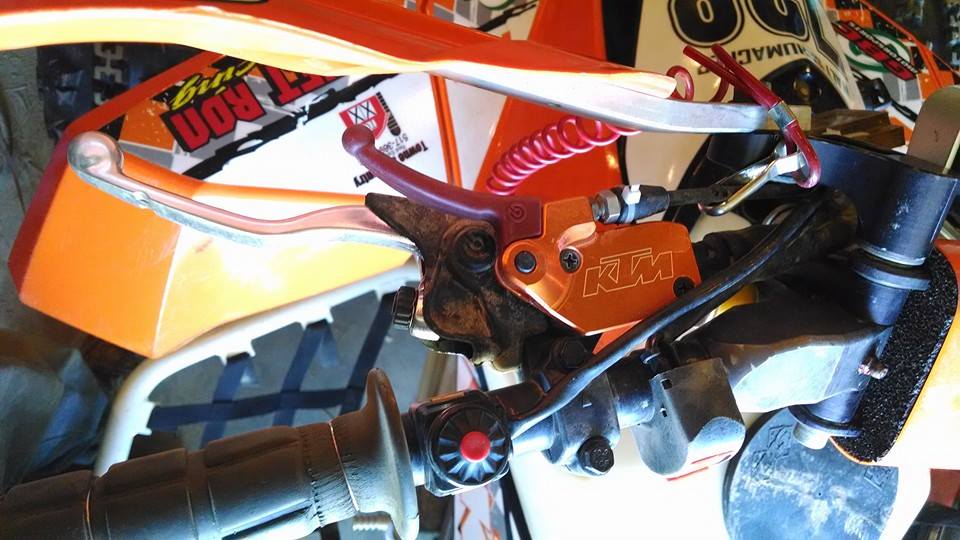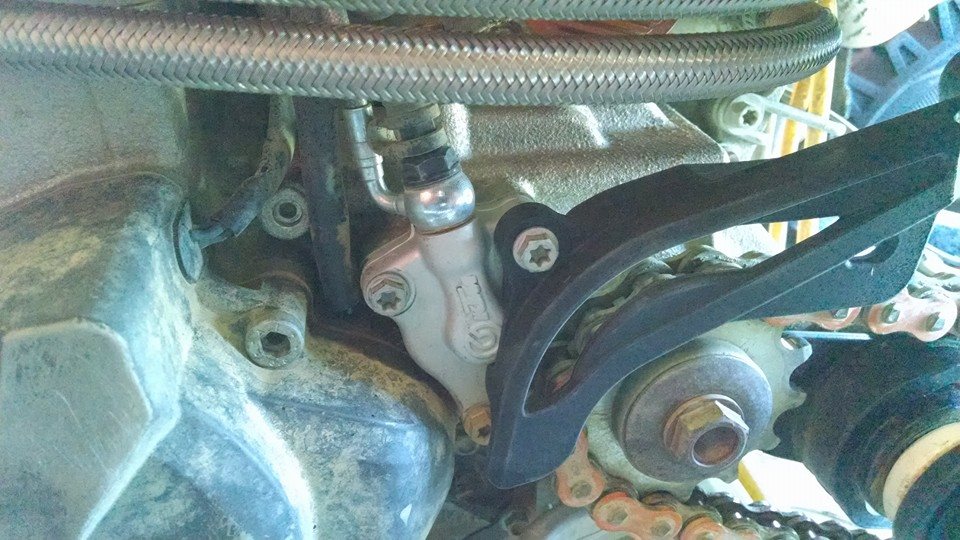The hydraulic clutch on a KTM is one of the nicest features. Unfortunately, when it’s acting up, it can also be one of the most frustrating. Here are some of the things I’ve learned over the years:
Like anyone, I started with the OEM Magura setup, and within 50 hours, the slave cylinder walls were scarred and all the mineral oil leaked out into the engine cases. I replaced the slave cylinder and prior to re-assembly, learned that the FRE KTM team had been using ATF in their clutch systems as it was thicker and wouldn’t boil. I switched to Mobil 1 Full Synthetic ATF at that point and to this day, I have never seen a slave cylinder fail that was running ATF from the beginning of its life. I’ve got to imagine that’s down to better lubrication, but there was also a slave cylinder piston seal update at some point that may be helping also.
Still, this system is not perfect. As my riding style and abilities evolved, I began operating at higher RPMs more often and for longer periods which lead to another problem. The RFS engine is not really adequately vented if you ask me. There’s no ventilation on the transmission side of the cases. High temperatures and extended time in the higher end of the rev-range can cause pressure to develop within the transmission area of the cases and force the slave cylinder back, disabling your clutch. I looked at numerous ways to vent the transmission side, but didn’t really come up with anything that I thought could withstand the vigors of GNCC racing. Recently, it occurred to me that screwing a barb fitting into some type of billet oil-fill cap could be an option, but all of the billet caps I found on the market were hollow inside. Still, an elbow fitting like IMS uses for the vent valve on their gas tanks would be an option, but I stopped pursuing it once I switched to a Brembo setup and that took care of my issue. One other place to put a vent would be through the kick-starter plug. Unfortunately, all of my quads are running kick-starters, so that’s no longer an option for me either.
Another fix that I considered was simply running a stiffer spring of some kind within the Magura slave cylinder that could deal with the increased pressure and still keep the piston in contact with the throw-out rod and ready to do its job when you squeeze the lever. I’m sure this would work, but haven’t actually tested it yet.
I can honestly say that for as long as I’ve owned KTMs the clutch had a somewhat vague feeling. When being ridden hard, I could grab the lever and never know what I was going to feel. Sometimes it would feel normal, but not do anything, only to be fine a few corners later. The ATF fix made it livable, but it still wasn’t right, and if your top-end is getting tired, adding excessive blow-by to the bottom end pressure, you’re going to be in even worse shape.
Ultimately, my fix for all of the issues I was having was the Brembo master and slave cylinder. They run DOT5.1 brake fluid which has a dry boiling point of 500°F and have a stiffer tension spring which keeps excess crankcase pressure from forcing the slave cylinder back. It was an easy one-two punch that is actually cheaper than the Magura stuff anyway, and since switching to it right around the half-way point of the 2014 season I haven’t had a single clutch hiccup. It is such a huge departure from where I’ve been for years that I continue to marvel at it. It’s the best feeling and most consistent clutch I’ve ever felt, just like a hydraulic unit should be.
I know a lot of folks who get by just fine with the Magura hydraulic components. Particularly, if you’re not a high-RPM guy, perhaps simply switching to ATF to avoid boiling and help save the slave cylinder would be a good bet. If you find yourself having problems with the clutch fading that you just can’t sort out, I can’t say enough good about the Brembo setup. In addition, big-bore kits seem to exacerbate the situation significantly. If you’ve recently increased the displacement on your bike and now feel that your clutch is starting to fade, the Brembo setup may be your answer.
Photos and part numbers below.


